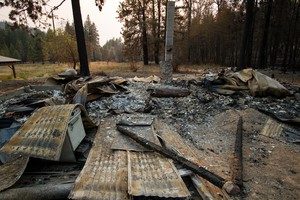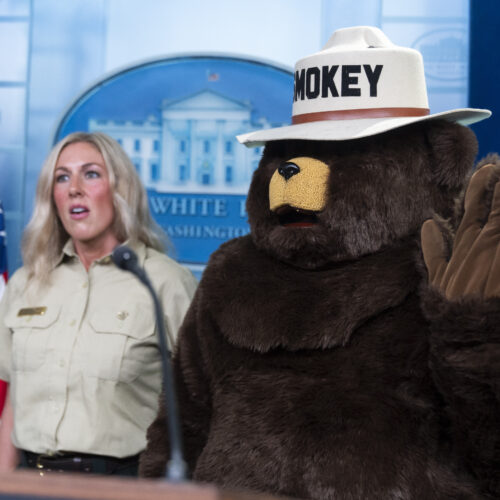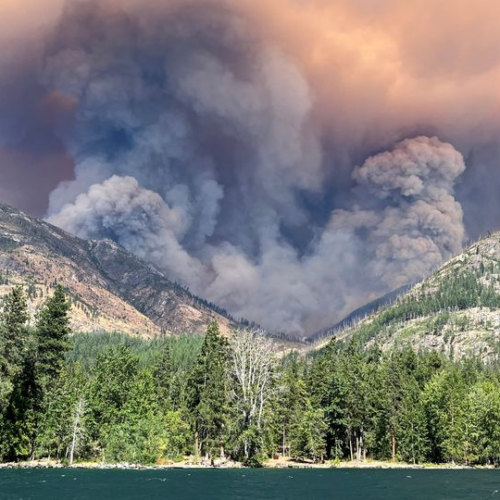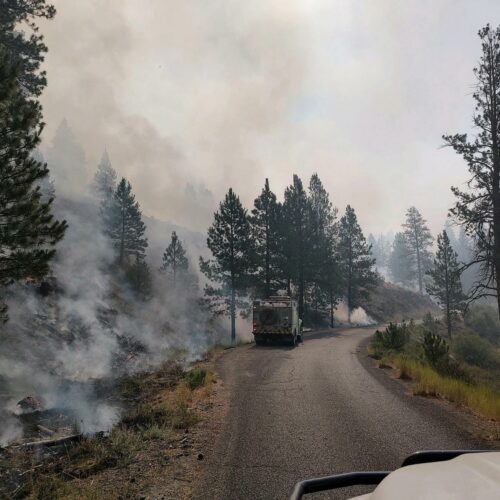
How To Prepare Your Home For Wildfire

Homes built on the edge of forests and grasslands are especially vulnerable to wildfires. Development in this zone — known as the wildland-urban interface — is the fastest-growing land use type in the lower 48 states.
The U.S. has more than 46 million homes in this wildfire danger zone and more people moving in right when climate change is making for longer, hotter and drier wildfire seasons.
Here are a few steps you can take to protect your home from wildfire.
Home Preparation:
Roof: Replace with Class A, noncombustible materials. Prevent debris buildup by avoiding roofs with ridges and valleys, and use bird stops to seal open edges.
Gutters: Keep free of debris.
Crawlspace and attic: Install 1/8-inch metal mesh screens to keep embers out.
Windows: Replace single-pane windows with double-paned, tempered glass windows.
Chimney: Install a spark arrestor with 1/2-inch mesh to prevent embers from escaping.
Fence: Replace wood with noncombustible materials. Ensure that any part of a fence touching the home is noncombustible.
Create A Defensible Space:
Zone 1: 0-30 feet from your home. Cover the ground with noncombustible materials like gravel or concrete. Remove overhanging branches. Do not store firewood here.
Zone 2: 30-100 feet from your home. Use vegetation “islands” to break up continuous fuel sources. Limit debris and keep the grass under 8 inches.
Zone 3: 100-200 feet from your home. Maintain a minimum of 10 feet between treetops. Limit debris and remove ladder fuels — fuels that allow fires to climb vertically into the upper canopy.
In addition, write and memorize an emergency plan for your family. You may also want to pack an emergency kit with essentials like water, food and first aid materials. Find a suggested list of items on Ready.gov.
Copyright 2018 Oregon Public Broadcasting
Related Stories:

Conservation icon Smokey Bear celebrates his 80th birthday
Smokey Bear visits the press briefing room of the White House. He is accompanied by Darci Drinkwater, of the U.S. Forest Service, on Tuesday in Washington, D.C. (Credit: Manuel Balce

Washington deals with peak fire season conditions, state agencies ready to respond
Everyone watching fires around Washington this week held their breath as about 600 lightning strikes hit the landscape across the state.
The Washington State Department of Natural Resources, who, alongside agency partners, prepared for those conditions this week by pulling in out-of-state resources and pre-positioning crews. The lightning strikes ignited at least two fires in the state, the Easy fire and Swawilla fire. According to a public information officer on the Swawilla fire, a series of fires started from lightning strikes on the Colville Reservation this week.

Around the Northwest, hot, dry, windy weather fuels fires
Dry, hot and windy conditions have communities on alert for wildfire danger across the Pacific Northwest. Those conditions propelled fire growth over the weekend, and more of the same weather is expected this week.















